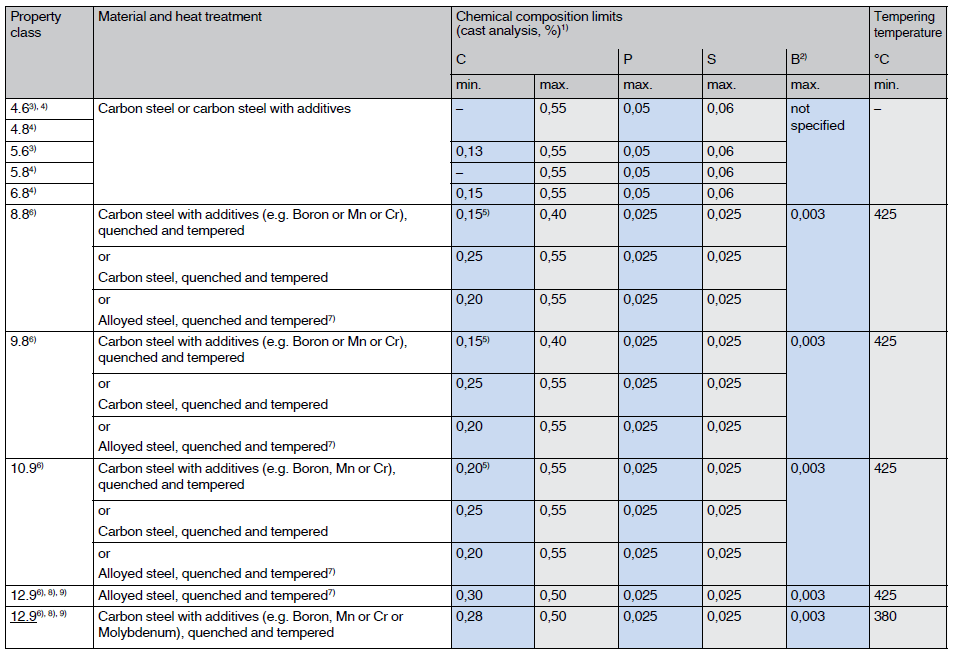according to ISO 898, part 1
Steels

1) In case of dispute, the product analysis applies.
2) Boron content can reach 0,005 %, provided that non-effective boron is controlled by addition of titanium and / or aluminium.
3) For cold forged fasteners of property classes 4.6 and 5.6, heat treatment of the wire used for cold forging or of the cold forged fastener itself may be necessary to achieve required ductility.
4) Free cutting steel is allowed for these property classes with the following maximum sulphur, phosphorus and lead contents: sulphur 0,34 %; phosphorus 0,11 %; lead 0,35 %.
5) In case of plain carbon boron steel with a carbon content below 0,25 % (cast analysis), the minimum manganese content shall be 0,6 % for property class 8.8 and 0,7 % for 9.8 and 10.9.
6) For the materials of these property classes, there shall be a sufficient hardenabiltity to ensure a structure consisting of approximately 90 % martensite in the core of the threaded sections for the fasteners in the «as-hardened» condition before tempering.
7) This alloy steel shall contain at least one of the following elements in the minimum quantity given: chromium 0,3 %, nickel 0,3 %, molybdenum 0,2 %, vanadium 0,1 %. Where elements are specified in combinations of two, three or four and have alloy contents less than those given above, the limit value to be applied for class determination is 70 % of the sum of the individual limit values shown above for the two, three or four elements concerned.
8) A metallographically detectable white phosphorous enriched layer is not permitted for property class 12.9/12.9. It shall be detected by a suitable test method.
9) Caution is advised when the use of property class 12.9/12.9 is considered. The capability of the fastener manufacturer, the service conditions and the wrenching methods should be considered. Environments may cause stress corrosion cracking of fasterners as processed as well as those coated.

